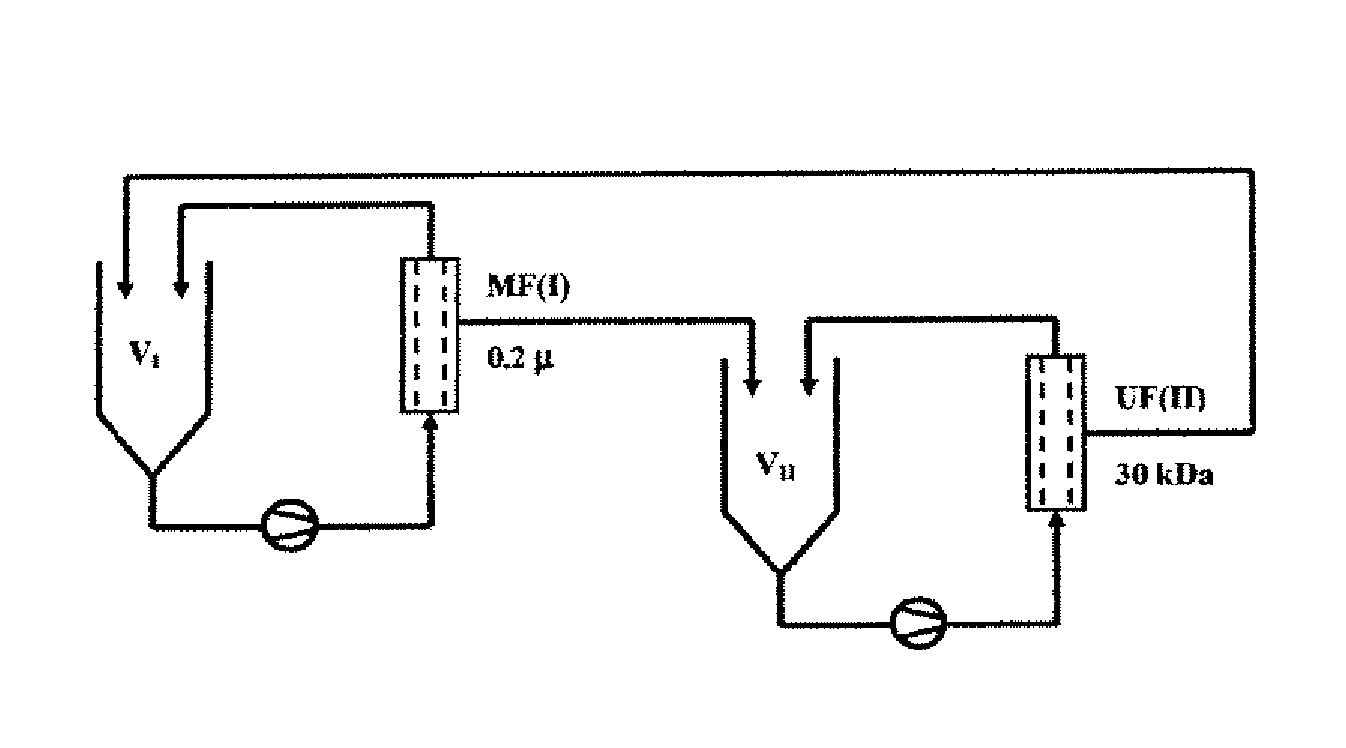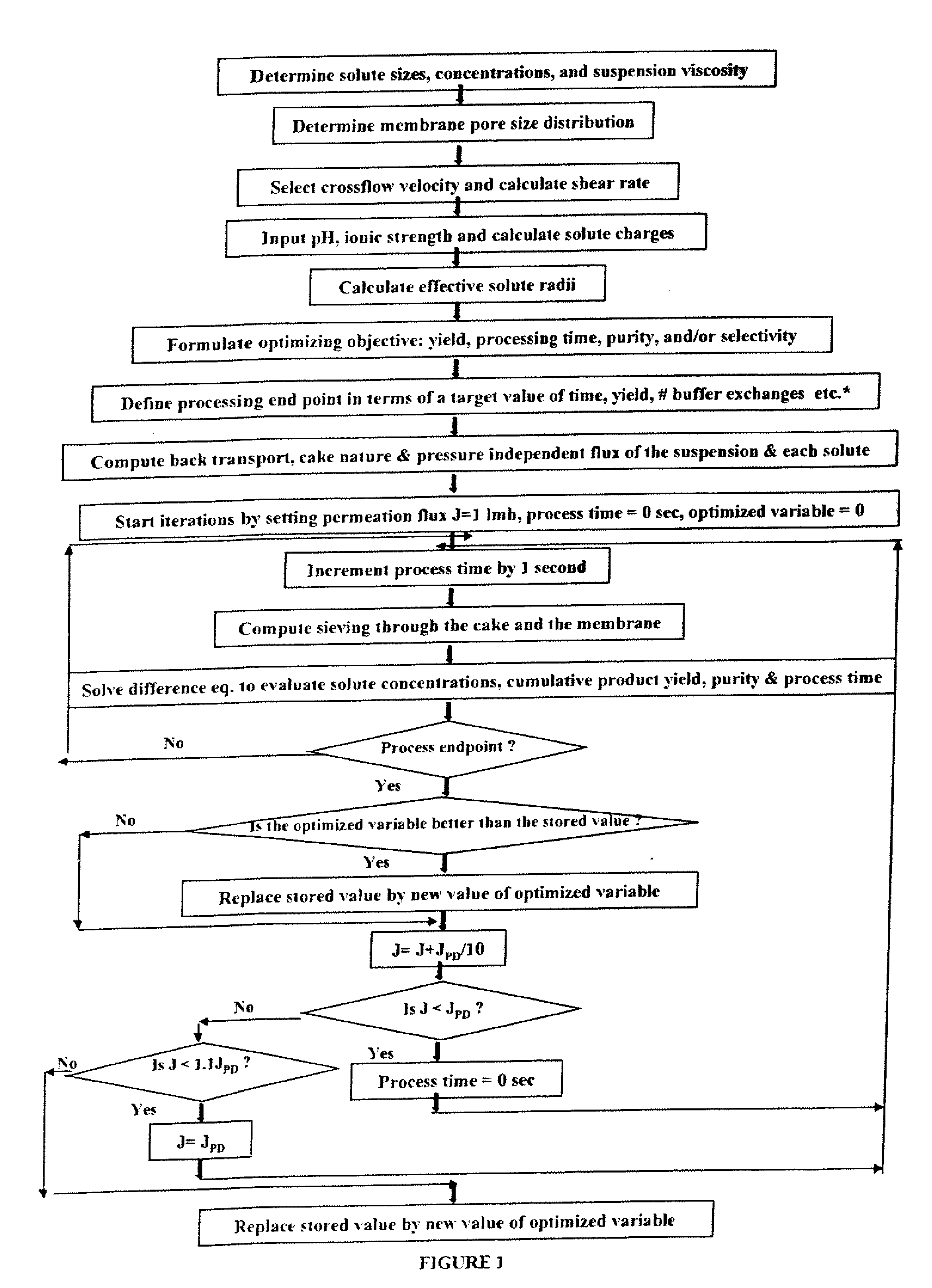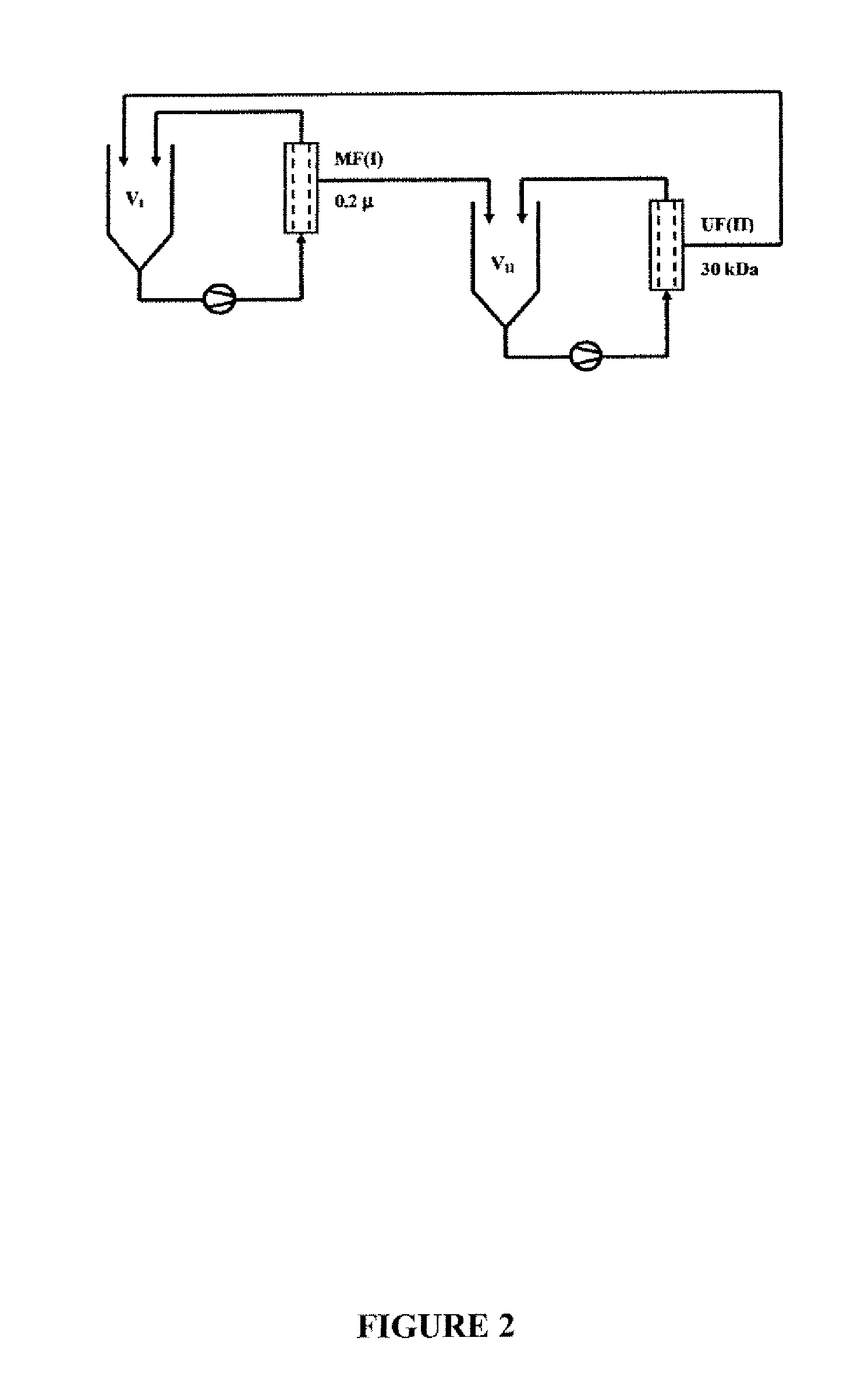Global model for optimizing crossflow microfiltration and ultrafiltration processes
- Summary
- Abstract
- Description
- Claims
- Application Information
AI Technical Summary
Benefits of technology
Problems solved by technology
Method used
Image
Examples
example 1
Validation of Algorithm in Separation of Hemoglobin and Bovine Serum Albumin in Batch Ultrafiltration Model
[0082] The first filtration validation test case described here is the separation of bovine serum albumin (BSA) and hemoglobin (Hb) based on Raymond et al., “Protein Fractionation Using Electrostatic Interactions in Membrane Filtration,”Biotechnol Bioeng 48:406-414 (1995) (which is hereby incorporated by reference in its entirety). In this specific situation, the UF process is operated at the pI of Hb (pH=6.8) and the BSA charge is given as −17.5 electronic charges (Raymond et al., “Protein Fractionation Using Electrostatic Interactions in Membrane Filtration,”Biotechnol Bioeng 48:406-414 (1995), which is hereby incorporated by reference in its entirety). In the absence of specific data for the 100 kDa membrane, such as the thickness and porosity, typical values used were based on membrane characteristics for protein crossflow filtration as described by Zeman et al., “Microfil...
example 2
Validation of Algorithm in Optimized Recovery of IgG From Transgenic Goat Milk in Microfiltration Model
[0088] The second validation test case involves the optimized recovery of IgG from transgenic goat milk (TGM) (Baruah et al., “Optimized Recovery of Monoclonal Antibodies from Transgenic Goat Milk by Microfiltration,”Biotechnol Bioeng 87:274-285 (2004), which is hereby incorporated by reference in its entirety). This extremely complicated polydisperse suspension was modeled as a suspension comprising fat globules and casein micelles of radii 300 and 180 nm, respectively, along with the principal whey proteins such as α-lactalbumin, β-lactoglobulin, serum albumin, and transgenic IgG apart from lactose. It was assumed that the MF membrane (0.1 μm) would allow 100% transmission of salts, hence, salts were not considered. The experiments were designed to find the lowest diafiltration time by varying the permeation flux and milk concentration factors. The diafiltration simulations mimi...
example 3
Validation of Algorithm in Separation of IgG from Bovine Serum Albumin in Batch Ultrafiltration Model
[0089] The third validation test case is the separation of IgG from BSA by Saksena and Zydney (Saksena et al., “Effect of Solution pH and Ionic Strength on the Separation of Albumin from Immunoglobulins by Selective Filtration,”Biotechnol Bioeng 43:960-968 (1994), which is hereby incorporated by reference in its entirety). Various experiments were conducted in this study, but the unusual case was chosen, where a 300 kDa membrane was used to pass neutral IgG (155 kDa) while the smaller charged BSA (69 kDa) was retained. At an ionic strength of 150 mM NaCl and a permeation flux of 18 Lmh, the model predicted selectivity of IgG over BSA as 1.1. This agrees with the experimental value of 1.0. However, at an ionic strength of 15 mM the model predicts a selectivity of 3.4 versus 2.8 achieved experimentally at 1.5 mM. Thus, there is qualitative agreement in the low ionic strength case also...
PUM
 Login to View More
Login to View More Abstract
Description
Claims
Application Information
 Login to View More
Login to View More - R&D
- Intellectual Property
- Life Sciences
- Materials
- Tech Scout
- Unparalleled Data Quality
- Higher Quality Content
- 60% Fewer Hallucinations
Browse by: Latest US Patents, China's latest patents, Technical Efficacy Thesaurus, Application Domain, Technology Topic, Popular Technical Reports.
© 2025 PatSnap. All rights reserved.Legal|Privacy policy|Modern Slavery Act Transparency Statement|Sitemap|About US| Contact US: help@patsnap.com



